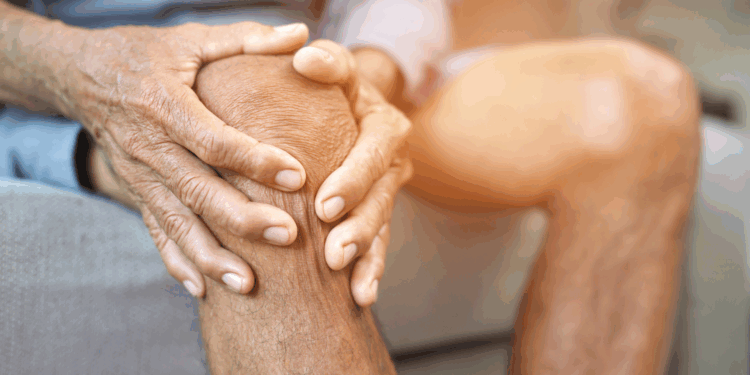Joint pain is part of everyday life for many older adults. It can be caused by arthritis, past injuries, or simply by ageing. Having joint pain can affect how you carry out your daily activities. While medicines can provide relief, relying too heavily on them is not always the best answer. Painkillers, especially when taken for long periods, may cause side effects like stomach problems, drowsiness, or dependency.
The good news is there are many gentle, natural solutions to manage joint pain. These can be applied alongside your medicines, which helps reduce the need for too many tablets. Let’s go through some practical tips that work and can be easily incorporated into your daily life.
Choose the Right Movements to Stay Active
Gentle movements are one of the best ways to ease joint pain. Many older adults avoid activity due to fear of pain, but avoiding movement only makes joints stiffer and weaker over time. The right type of exercise can strengthen your muscles, improve flexibility, and reduce pain.

Join Now >
- Walking: Walking daily for 20 to 30 minutes keeps joints flexible and improves blood circulation. Choose flat surfaces or walk indoors.
- Stretching: Gentle stretches in the morning or before bedtime reduce stiffness. Focus on major joints like knees, hips, and shoulders.
- Water exercises: Swimming or walking in a pool reduces pressure on the joints and allows full-body movement.
- Yoga: Yoga is a controlled exercise that improves balance, flexibility, and relaxation. You may find it enjoyable and calming.
Tip: Start small. Even 10 minutes a day can make a difference. The goal is to keep moving, not to exhaust yourself.
Try Hot and Cold Therapy
Hot and cold therapy can bring quick relief from joint discomfort.
- Heat therapy: A warm towel or heating pad helps relax stiff joints and muscles. It is especially useful for morning stiffness.
- Cold therapy: An ice pack wrapped in a cloth reduces swelling and numbs sharp pain, especially after activity.
Tip: Some people switch between heat and cold, depending on what feels better. Apply for 15–20 minutes at a time.
Maintain a Healthy Weight
Even a little extra weight puts additional pressure on your joints, especially knees, hips, and the back. Focusing on small, sustainable changes in your daily routine can help you lose weight and reduce joint pain:
- Eat fresh fruits, vegetables, and whole grains.
- Limit deep-fried foods and sugary snacks.
- Include proteins like lentils, beans, fish, or chicken.
- Drink enough water to stay hydrated.
Tip: If drinking enough water is a challenge, incorporate foods with high water content, like cucumber & watermelon, into your diet.
Gentle Home Remedies
Some traditional home remedies passed down through families can be comforting. Even if they don’t replace medical treatment, they are safe and soothing.
- Turmeric milk: Turmeric contains curcumin, which has anti-inflammatory properties. A warm cup of turmeric milk before bedtime may ease discomfort.
- Ginger tea: Ginger reduces inflammation and improves digestion. A cup of ginger tea can be both refreshing and helpful.
- Warm oil massage: Massaging joints with mustard oil, sesame oil, or coconut oil improves circulation and relieves stiffness.
Daily Habits to Support Your Joints
The way you sit, stand, and move throughout the day also affects joint health.
- Good posture: Sit upright with your back supported, and avoid slouching, which puts pressure on your spine.
- Use supportive shoes: Wear comfortable shoes with soft soles to reduce strain on knees and hips
- Assistive aids: Walking sticks or grab bars in the bathroom provide safety and reduce strain on your joints.
- Balanced rest: Avoid sitting in one position for too long. Rest is important, but try getting up and stretching regularly.
Relax and Control Your Stress
Stress can make joint pain worse. When you are tense, your muscles tighten, which increases discomfort. Gentle relaxation techniques can calm both body and mind.
- Deep breathing: Take slow, deep breaths for 5 minutes in the morning or before sleeping.
- Meditation: Even a few minutes of guided meditation reduces stress and improves sleep.
- Music and hobbies: Engaging in activities you enjoy distracts from pain and lifts your mood.
Tip: Try to keep a positive routine. Good sleep, social interaction, and laughter all help reduce pain.
Consider Physiotherapy, Supplements, or Natural Aids
A physiotherapist can teach you exercises tailored to your condition, guide you in safe ways to move, and provide gentle therapies like ultrasound or manual techniques to ease pain.
Some supplements may help older adults find relief from joint pain. While they don’t work for everyone, they may support joint health:
- Calcium and Vitamin D: Support bone health and reduce the risk of fractures.
- Omega-3 fatty acids (fish oil): Help reduce inflammation in joints.
- Glucosamine and Chondroitin: May support cartilage health.
Tip: Always discuss supplements with your doctor before starting, especially if you take other medicines.
When You Should Seek Medical Help?
Home remedies can help manage joint pain, but don’t ignore pain that:
- Lasts for weeks.
- Suddenly becomes severe.
- Comes with swelling, redness, or fever.
- Makes it difficult to walk or carry out daily tasks.
A doctor can check if there is an underlying condition that needs treatment. Sometimes, early medical attention prevents the problem from worsening.
Final Thoughts
Joint pain should not control your life. Simple remedies such as regular movement, home therapies, good posture, and stress management can reduce pain and improve your quality of life. Medicines are useful, but they should be part of a wider plan, not the only tool.
Remember: small, steady changes add up. A short walk, a warm compress, a healthy meal, or a cheerful chat with a friend, each of these plays a role in keeping joints and spirits healthy. With the right balance of care, older adults can stay active, comfortable, and independent without relying too much on medication.







